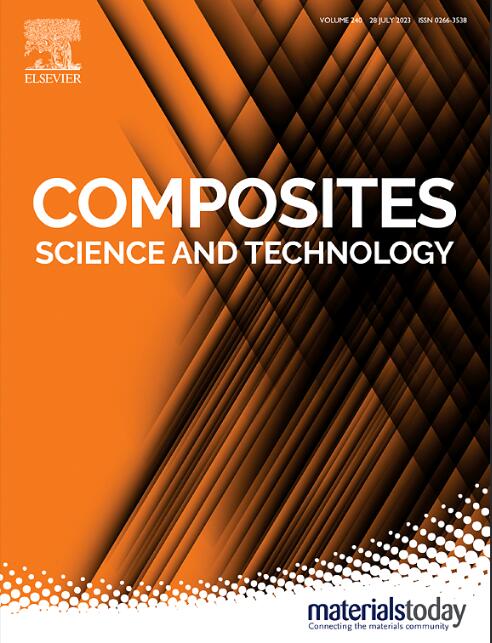用于全过程动态防冰和除冰的多响应可控微结构超疏水表面
IF 8.3
1区 材料科学
Q1 MATERIALS SCIENCE, COMPOSITES
引用次数: 0
摘要
仿生制备的一系列微结构超疏水表面在防冰/除冰领域具有独特的优势。然而,微观结构形态调制与功能复合材料之间的协同效应,以及在不同低温环境下对防冰/除冰的影响机制仍有待探讨。本文利用复合材料的形状记忆效应和电热/光热响应特性,系统研究了一种将被动防冰机制与主动除冰策略相结合的协同防冰/除冰系统。研究了液滴在不同温度下的动态冲击行为和微观组织形态。阐明了电热/光热响应和显微组织形态转变的机理。调节液滴的撞击行为以避免结冰,降低表面传热效率以延缓结冰过程,减少冰的粘附以实现去除表面覆盖的冰。结合基板功能材料的电热/光热响应性和表面微结构的可逆转换特性,为全过程智能响应防冰/除冰的研究提供了新的思路。本文章由计算机程序翻译,如有差异,请以英文原文为准。

Multi-response controllable microstructured superhydrophobic surfaces for full-process dynamic anti-icing and de-icing
A series of microstructured superhydrophobic surfaces prepared by biomimicry exhibit unique advantages in the field of anti-icing/de-icing. However, the synergistic effect between microstructural morphology modulation and functional composites, as well as the mechanism of influence on anti-icing/de-icing in different low-temperature environments remain to be explored. Here, leveraging the shape memory effect and electrothermal/photothermal response characteristics of composite materials, a synergistic anti-icing/de-icing system integrating passive anti-icing mechanisms with active de-icing strategies has been systematically investigated. The dynamic impact behaviours of droplets at different temperatures and microstructural morphology were investigated. Elucidating the mechanisms of electrothermal/photothermal response and microstructural morphology transformation. Modulation of droplet impact behavior to avoid ice formation, reduction of surface heat transfer efficiency to delay the icing process, and decrease of ice adhesion to achieve removal of surface-coated ice. Combining the electrothermal/photothermal responsiveness of the substrate functional materials and the reversible conversion properties of the surface microstructure, it provides a new idea for the research of full-process, intelligent-response anti-icing/de-icing.
求助全文
通过发布文献求助,成功后即可免费获取论文全文。
去求助
来源期刊

Composites Science and Technology
工程技术-材料科学:复合
CiteScore
16.20
自引率
9.90%
发文量
611
审稿时长
33 days
期刊介绍:
Composites Science and Technology publishes refereed original articles on the fundamental and applied science of engineering composites. The focus of this journal is on polymeric matrix composites with reinforcements/fillers ranging from nano- to macro-scale. CSTE encourages manuscripts reporting unique, innovative contributions to the physics, chemistry, materials science and applied mechanics aspects of advanced composites.
Besides traditional fiber reinforced composites, novel composites with significant potential for engineering applications are encouraged.
 求助内容:
求助内容: 应助结果提醒方式:
应助结果提醒方式:


